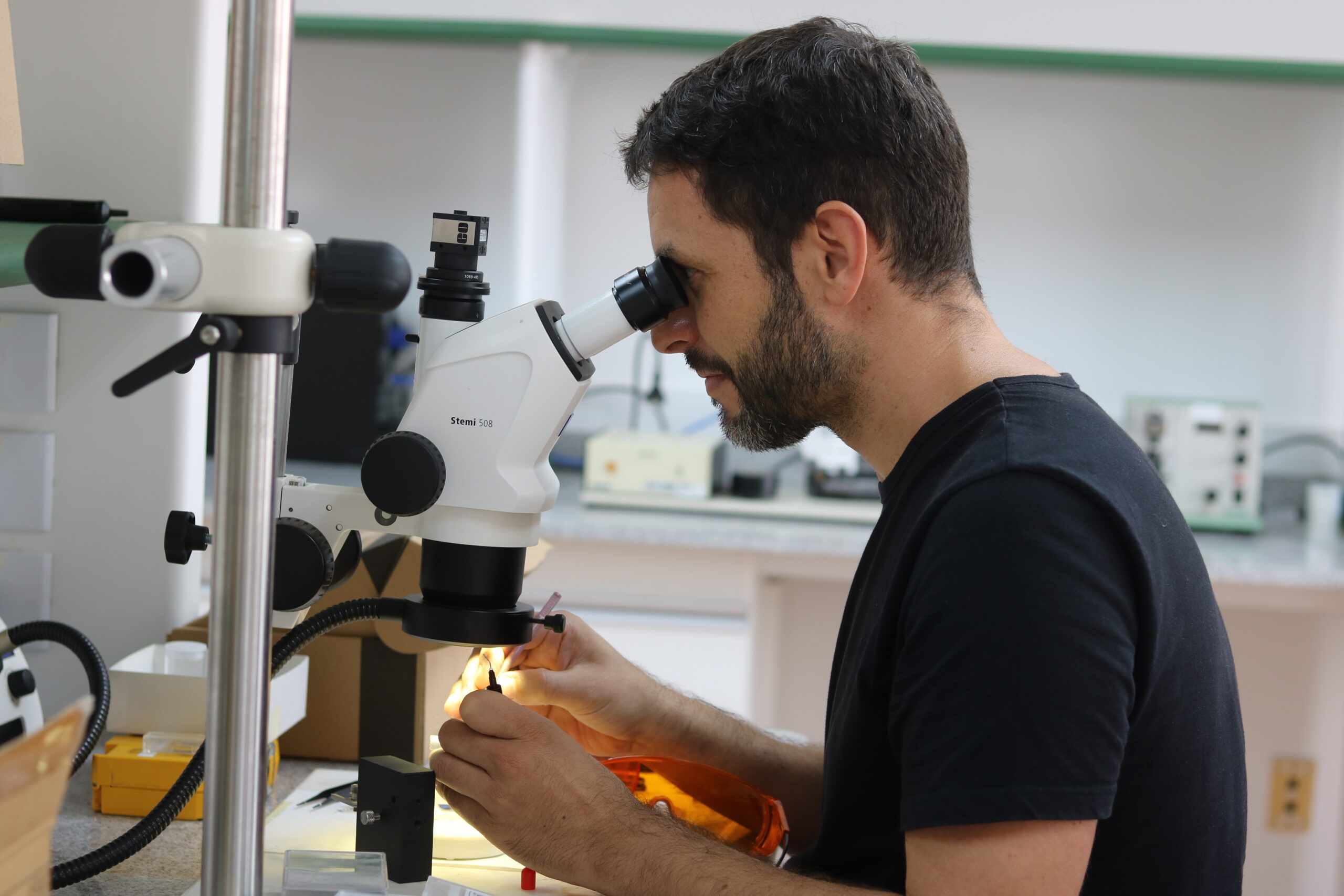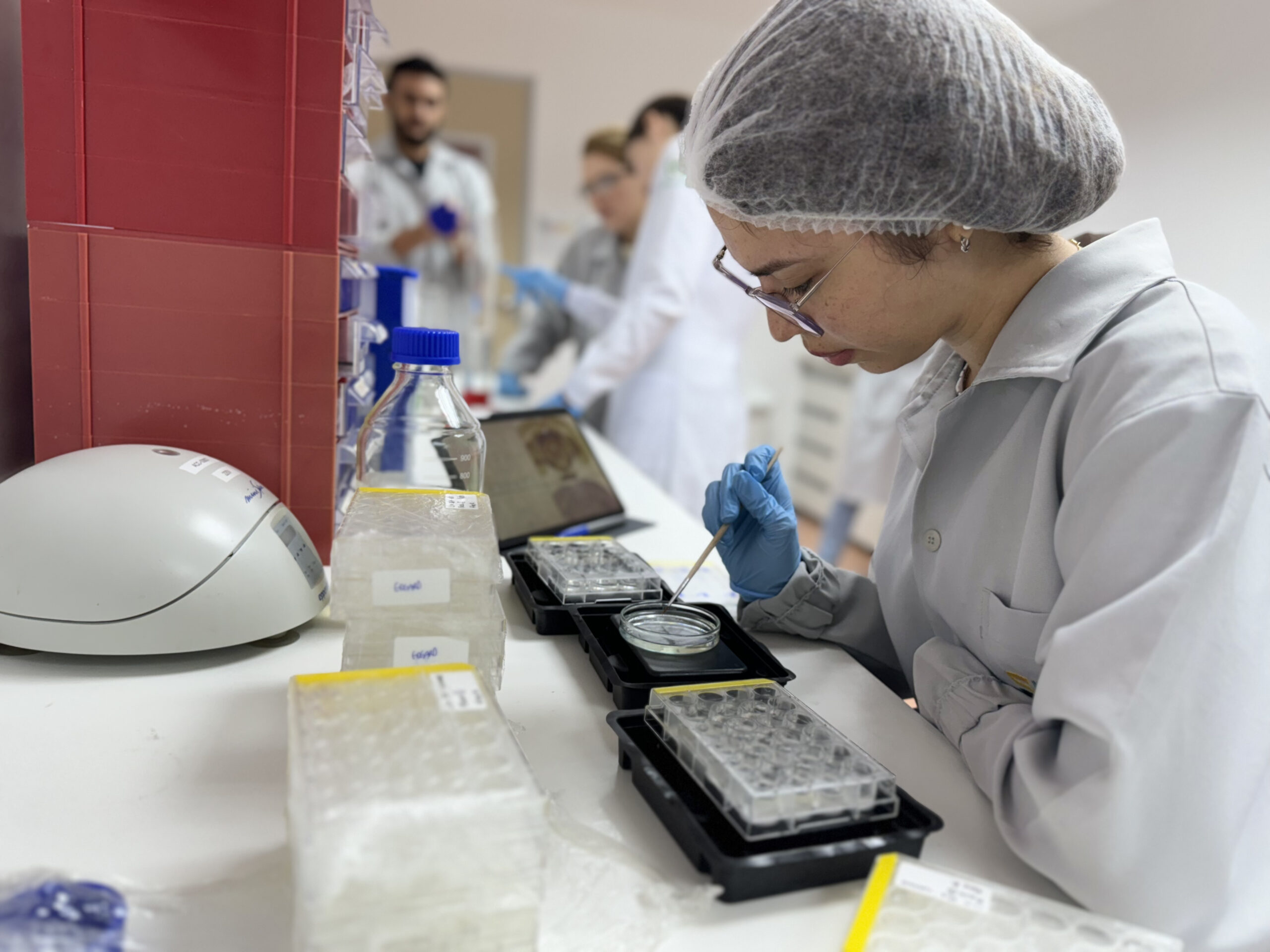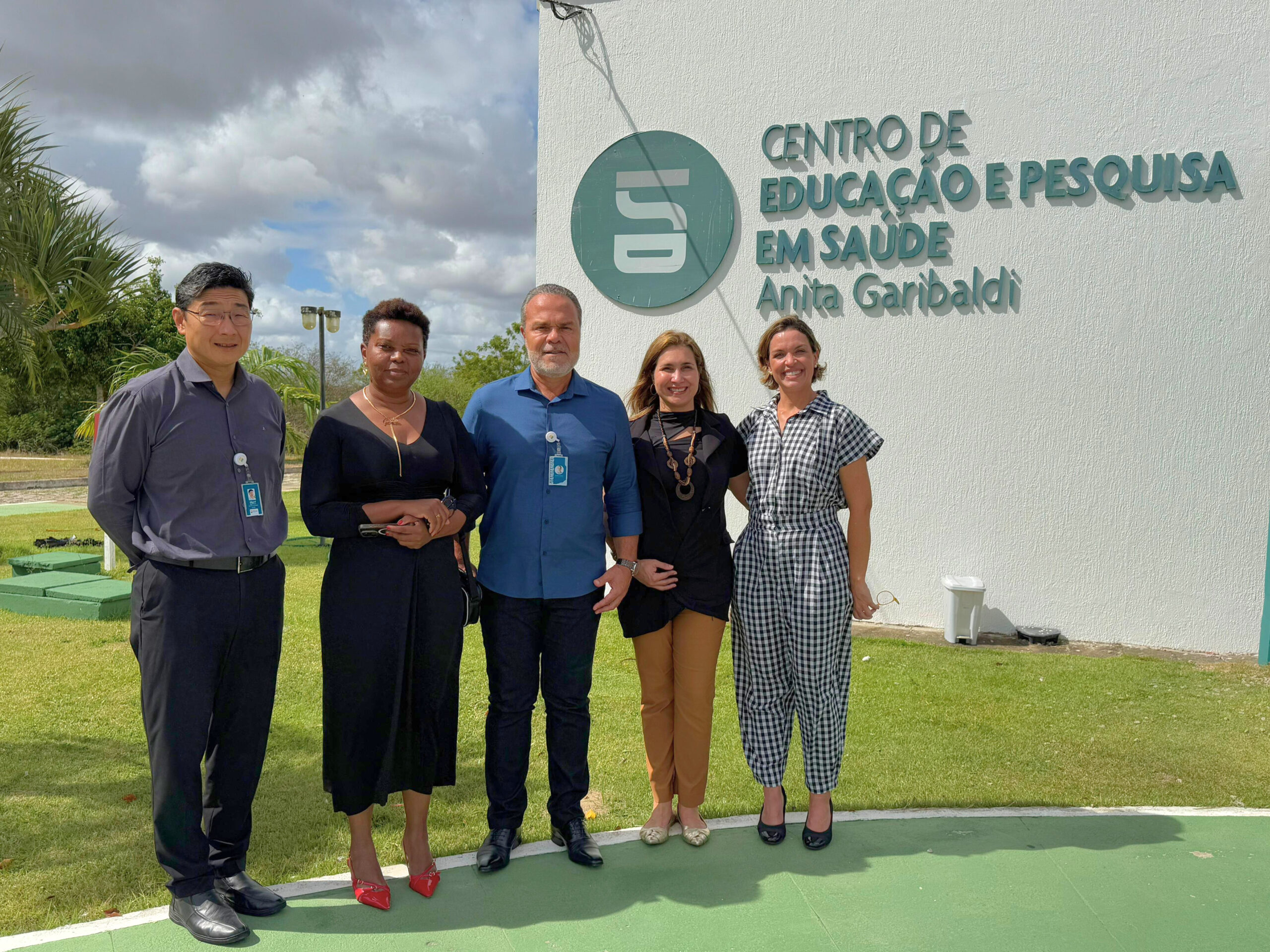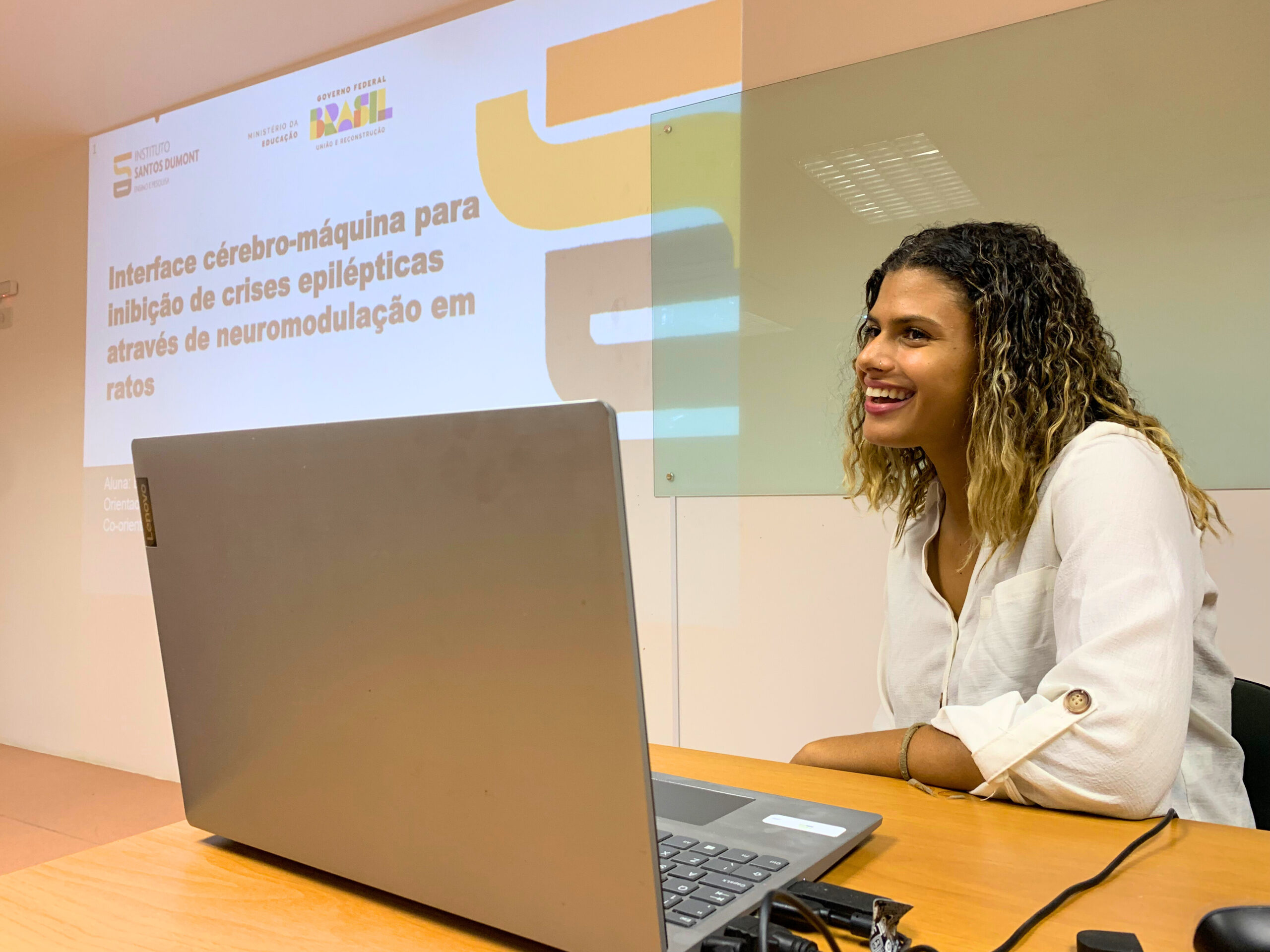The Santos Dumont Institute (ISD) has an interdisciplinary research infrastructure to develop scientific studies and training in the areas of Neuroscience, Neuroengineering and Health. The ISD has an interdisciplinary team of researchers and research support technicians available to assist in research and training of young students.
With the aim of encouraging the sharing of ISD's interdisciplinary laboratories and contributing to the strengthening of research in Brazil, researchers external to the institution can submit requests to use the infrastructure available in the areas of Neuroscience, Neuroengineering and Health.
Scientific Analysis Committee:
Edgard Morya: Doctor in Human Physiology from the Institute of Biomedical Sciences of the University of São Paulo (USP) and Bachelor in Physiotherapy (USP). He developed Post-Doctoral research in Human Physiology at the Institute of Biomedical Sciences at USP.
Maria Carolina Gonzalez: PhD in Physiological Sciences from the Faculty of Medicine of the University of Buenos Aires, in Argentina and a Degree in Biotechnology with an emphasis on Cellular and Molecular Biology from the National University of Quilmes, in Argentina. He carried out post-doctoral research at the Memory Research Laboratory of the Brain Institute of the Federal University of Rio Grande do Norte, as a scholarship holder in the Attraction of Young Talents (A) modality of the Science without Borders Program and PNPD. In 2021, she won the Early Career Award from the International Brain Research Organization and, in 2022, she was one of the scientists selected in the Serrapilheira Institute's Public Call for research promotion.
Caroline Cunha do Espírito Santo: PhD in Neurosciences from the Federal University of Santa Catarina (UFSC), Master in Physiotherapy from the State University of Santa Catarina (UDESC) and graduated in Physiotherapy (UDESC). He carried out post-doctoral research at UDESC and worked as a teacher in the undergraduate Physiotherapy courses at UFSC (Campus Araranguá) and in the lato sensu post-graduate course in Adult and Child Neurofunctional Physiotherapy at Faculdade Inspirar.
Discover our laboratories:
I – Human Electrophysiology and Human-Machine Interface Laboratory
The electrophysiology and human behavior and Human-Machine Interface laboratory is focused on clinical research activities in the areas of analysis and non-invasive intervention of the cortical activity of children and adults with and without disabilities.
The activities carried out in this laboratory include: analysis of electroencephalographic signals, eye tracking, non-invasive neuromodulation through transcranial direct current stimulation (tDCS) and transcranial magnetic stimulation (TMS), functional near-infrared spectroscopy (fNIRS), functional electrical stimulation (FES) and training by virtual reality (VR).
- Human Electrophysiology
- Man-machine interface
- ActiCap 16 and 32 channels
- Actichamp
- Caps for tDCS
- FES device
- V-Amp (2, 3 and 4)
- HTC VIVE Virtual Reality Kit
II – Microscopy Laboratory
The microscopy laboratory is focused on histological scanning. It is possible to take captures in bright field and fluorescence to higher quality captures in confocal. We can also carry out quantitative analyzes of biological material using Stereo investigator and Zen black software.
- Confocal Microscopy
- Microscopy
- Confocal microscope (Zeiss – LSM 710);
- Argon, HeNe and Diode Laser;
- 120Q Fluorescence Source
- Motorized board
- Confocal microscope (Zeiss – LSM 710) with motorized stage
- ZenBlackSoftware
- Zeiss microscope (Axio imager-Z2) with motorized stage integrated into the stereology apparatus (MBF – Stereoinvestigator);
- Exact X-cite fluorescence source (Lumen Dynamics);
- Dapi, FITC and Texas Red fluorescence cubes.
III – Neuroengineering Laboratory
The Neuroengineering Laboratory is the ideal space for developing projects in analog electronics, digital electronics, electronic instrumentation, embedded systems and small mechanical projects. The tools available help in the design and creation of printed circuit boards, electronic and mechanical prototypes, and human-machine integration systems. The facilities also have a neuroprosthetics laboratory, dedicated to the assembly of implantable microelectrode prostheses (simple, stereotrodes and tetrodes) for acquisition in animal electrophysiology.
- neuroengineering
- Neuroprosthetics
- FDM 3D Printer – S3 Sethi
- PCB Router (CNC for printed circuit boards) – PhoenixCNC
- CNC Laser Cutting 80W – Zumak
- Tektronix TDS 2002B Oscilloscope
- Tektronix DPO 2014B Oscilloscope
- MPL-3303 Minipa Symmetrical Countertop Fountain
- Equipment for building Open Ephys Twister3 tetrodes.
- CNC laser cutting equipment for building implantable acrylic templates and behavioral setups
- Zeiss magnifying glasses models Stemi 508 and Stemi 2000C with Zeiss LED illuminators model CL4500.
- Weller model WSL precision tweezers and soldering stations with micro tips
IV – Neurorehabilitation Laboratory
The neurorehabilitation laboratory is focused on clinical assistance and research activities in the area of biomechanical analysis and intervention of human movement, specifically, for the functional recovery of gait in people with physical disabilities.
Activities carried out in this laboratory include: training with whole body vibration, acquisition and processing of kinematic and kinetic data, gait training and postural balance in zero gravity and gait training with partial weight support and robot-assisted.
- ZeroG
- Therapeutic Gym
- A Kikos P201® vibrating platform
- A kinematic analysis system (Qualisys Motion Capture – Qualisys@)
- A kinematic and kinetic analysis system (ProtoKinetics Zeno™ Walkway Gait Analysis System@)
- A zero gravity gait and postural balance system (Aretech ZeroG Gait and Balance System@)
- Two robot-assisted gait training systems (Lokomat Hocoma@)
Meet our interdisciplinary team

Diego Aquino Chamber
Master in Psychobiology from the Federal University of Rio Grande do Norte (UFRN) and degree in Biological Sciences (UFRN). He has experience in the areas of aging, Parkinson's and chronobiology. He is responsible for the wet laboratory, where Nissl staining, immunohistochemistry, immunofluorescence techniques are carried out, as well as cryostat microtomy, microscopy (bright field and fluorescence) and confocal.

Larissa Coutinho de Lucena
PhD and Master in Physiotherapy from the Federal University of Rio Grande do Norte (UFRN), with a degree in Physiotherapy and specialization in Neurofunctional Physiotherapy. He has knowledge and experience in the areas of neurofunctional physiotherapy aimed at adults and the elderly, biomechanics and movement analysis in the context of rehabilitation, partial weight-bearing or robot-assisted gait training and neurotechnology and its clinical applications. At ISD, he is responsible for supporting research carried out in the Human Electrophysiology, Human-Machine Interface and Neurorehabilitation laboratories.

Luiz Henrique Bertucci Borges
He has a degree in Electrical Engineering (2021) from Universidade Positivo and a master's degree in Neuroengineering (2023) from Instituto Santos Dumont (ISD). He has experience in the area of Electrical Engineering, with an emphasis on the development of electronic circuits, working mainly on the following topics: assistive technology, rehabilitation technology, acquisition of biological signals and human-machine interface. At ISD, he works to support research carried out in the neuroengineering laboratory.
Vivarium and Surgical Center
In addition to the laboratory structure, the ISD has a marmoset and rodent vivarium and two surgical centers equipped with the most modern equipment for performing surgeries on animal models. In addition, it has a team made up of veterinarians and technicians, who work in the care and attention of animals used for teaching and research, guidance and training of researchers to carry out research on animal models.

Valéria Arboés Petronilo
Graduated in Veterinary Medicine (2004) from the Federal Rural University of Pernambuco (UFRPE), she works as a veterinarian at ISD, where since 2006 she has been Technical Responsible for the creation and experimentation vivarium. She is coordinator of the Ethics Committee for the Use of Animals at ISD, with experience in veterinary medicine for laboratory animals, biotery; bioethics and biosafety in animal experimentation. Current, mainly, on the following topics: management, breeding, health and well-being of experimental animals, Experimental stereotaxic surgery in rodents and marmosets. In the vivarium, it plans, supervises, acts and monitors the processes and care of animal species used in research and teaching, in addition to providing basic assistance and care to animals and other responsibilities. In research, it guides and develops training for technicians and researchers regarding handling, manipulation and procedures carried out on animals.

Alexandre Magno de Freitas Dias
He completed primary education at Escola Estadual Henrique Castriciano de Sousa. He has worked as a Vivarium Assistant at the Santos Dumont Institute since 2009. He has experience in handling laboratory animals, with a focus on marmosets. At the vivarium, he is responsible for the management, checking and care of the animals in the marmoset vivarium, including reproduction, from pairing to weaning. Assists researchers in handling and checking animals; maintains the cleanliness and organization of the environment, prepares and makes food available to the animals.

Sergio Caciano de Oliveira Neto
Graduated in Geography from Vale do Acaraú State University (2011). He has worked as a Vivarium Assistant at the Santos Dumont Institute since 2010. He has experience in handling laboratory animals (rats, mice and marmosets). In the rodent vivarium, is responsible for checking and caring for the animals in the experimental vivarium; assists researchers in handling and monitoring animals; maintains the cleanliness and organization of the environment; performs stock control; guarantees the exchange of cages and the availability of food for the animals.

Sidney Pereira da Cruz
He completed high school at Escola Estadual Mario Franciscon (2001). He has worked as a Vivarium Assistant at the Santos Dumont Institute since 2010. In the rodent vivarium, he is responsible for checking and caring for the animals, including reproduction, from pairing to weaning; assists researchers in handling and monitoring animals; handles and checks animals; maintains the cleanliness and organization of the environment; performs stock control; guarantees the exchange of cages and the availability of food for the animals.










